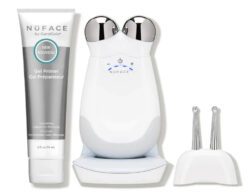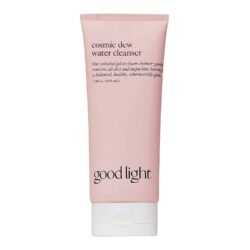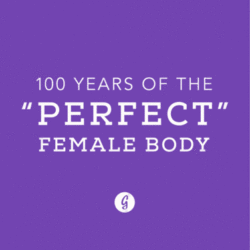A few days ago one of my favorite blogs, The Art of Manliness (yes I know I’m a girl but I still enjoy its content), published a post called A Man’s Guide to Dry Cleaning.
The article was well-researched and well-written, and chock full of helpful information. However, it was apparent from the start that the author does not have any first-hand experience in dry cleaning.
I asked myself why I couldn’t do it better myself.
My parents are Korean immigrants who have been in the dry cleaning business for 22 years. I have helped out at the store since I was 7 years old, and continue to do so to this day. Sure, I may not run the store, or even work full-time (I only started to officially work part-time last month), but I am confident that I have assisted my parents enough to have gained the experience required for this post.
I have decided to make this a 2-part series. The first will discuss dry cleaning in general, and more importantly, the different methods of dry cleaning — the pros and cons, as well as the environmental/health impacts of each. The second will provide an insider’s advice as to how to make the best of your dry cleaning experience.
If you have any questions, or would like any additional issues addressed, please feel free to leave a comment or shoot me an email using my contact form.
Let’s begin.
Dry cleaning is the use of non-water substances to remove soils and stains from clothes. The most typical use of dry cleaning uses a chemical called tetrachloroethylene (perchloroethylene) — more commonly referred to as “perc” — to clean the garments. Perc is by no means a “dry” agent; in is in fact in liquid form and the only reason the word “dry” is used in “dry cleaning” is because when the garments come out of the machine, they are dry.
I will not talk about the multiple steps involved in cleaning and preparing each garment. There are tons of web resources that discuss this topic and if you wish, you can go look for yourselves. What I do want to examine are the most popular methods of dry cleaning (aka the dry cleaning chemicals), what they are, and the pros and cons associated with each.
Perchloroethylene, or “Perc”
Perc is the process long-favored by dry cleaners and still in use by the great majority of dry cleaners in the U.S.. It is inexpensive, cleans remarkably well and relatively safe if handled properly.
pros: inexpensive, and no other chemical comes close to it when it comes to cleaning garments well
cons: it is a toxic chemical that must be handled with care and disposed of properly. It has been known to “wear down” fabrics over time. It has also been linked to both health and environmental issues.
Most of my readers are probably aware of the cancer risks associated with perc. To be more specific, the International Agency for Research on Cancer has classified perchloroethylene as a 2A carcinogen, which means that it is “probably carcinogenic to humans.”
Is this a cause for concern? Of course. I worry every day that my parents will develop cancer as a result of their chosen profession. But the fact remains that at this point, there exists no alternative that can clean clothes as well at a similar price point.
Hydrocarbon, or “Organic” Dry Cleaning
I see many dry cleaners these days touting “organic dry cleaning.” When cleaners advertise the use of “organic” or “nontoxic” dry cleaning, what they are almost always implying is that they use isoparaffin hydrocarbon, which, like perc, is a synthetic petroleum distillate and just as toxic. The only reason they are able to label their process as such is via loopholes in labeling laws.
pros: the dry cleaning establishment is able to advertise “safer” methods
cons: it is no safer than perc, and has a slightly weaker cleaning ability than perc
CO2 Cleaning
CO2 (carbon dioxide) cleaning uses CO2, in liquid form, as a cleaning agent in a pressurized environment. When it was first announced a few years ago, it gained much publicity and reports hailed it as the wonder process. However, when put to the test by actual dry cleaners under various condition, it proved to be a poor cleaning agent.
pros: no known health risks, environmentally safe
cons: a poor cleaning agent, machinery and required supplies are expensive
Solvair (Reformulated Rynex)
The Solvair system was developed to improve on the CO2 system via the use of propylene glycol ether to clean, and CO2 to rinse. The problem with the Solvair system is that propylene glycol ether has been proven to be just as toxic as perc, and studies have shown it to have potentially carcinogenic properties as well (mainly, the presence of tumors in mice).
Solvair has recently reformulated itself in order to decrease potential health risks. However, it has yet to undergo a formal evaluation of its toxicity levels.
pros: environmentally safe
cons: no formal testing has yet to be performed on its health risks, machinery and supplies are expensive
GreenEarth (Volatile Methyl Siloxane)
GreenEarth has been hailed as the safest and most environmentally-friendly dry cleaning process since its inception in 1999. It is mild on clothes, does not fade colors, and has a softening effect.
However, it should be noted that volatile methyl siloxane, or decamethylcyclopentasiloxane, has recently been found to cause uterine tumors in rats. Decamethylcyclopentasiloxane is also under scrutiny for its apparent persistence in the environment and in human and animal tissues.
pros: is probably the #1 choice for health and environmentally conscious dry cleaners in the U.S.
cons: tests are still underway for the potential health and environmental hazards listed above
Wet Cleaning
Wet cleaning uses water, and as such is considered the safest of all the dry cleaning processes (well, technically it isn’t dry cleaning). Water is used in a precisely controlled conditions so that “dry clean only” garments can be washed in water.
The problem with wet cleaning is that it is a lengthy and involved process. The water temperature and levels must be carefully adjusted for different types of garments, fabrics, and even the stage of the washing cycle. Many cleaners stay away from this process for this reason; it takes a true professional to be able to clean each garment without shrinkage or damage.
pros: is the safest and more environmentally friendly
cons: high potential for shrinkage and damage, involved and more difficult process for cleaners
What you should garner from the information I’ve collected above is that there are pros and cons to every dry cleaning process. It really is a trade-off: do you prefer cleaner clothes (at a cheaper price), or do you care more about your health and/or the environment?
The answer to the question seems simple when it is written out like this, but what you have to realize is that many of the cleaners using the safer methods are forced to charge much higher fees in order to make a profit, not to mention that many of the safer methods do not do a good job cleaning!
What would be my unsolicited advice as someone who is part of a dry cleaning family? (Yes, many of my aunts and uncles run dry cleaners too.)
- Do your research on the various dry cleaning methods. I have tried my best to outline them above, but there is a lot more information available for your perusal.
- Make an educated decision based on your research. I am not telling you which method is better/worse. That choice should be up to you.
- Dry-clean your clothes as least as possible. Yes, I may be driving business away the tens of thousands of dry cleaners in the country (including my parents), but I truly believe that only dry cleaning your clothes when needed is the best for your health, the environment, and your clothes.
My parents’ dry cleaner uses perc and wet cleaning. They choose to only run the perc machine for certain fabrics, soils and stains. Everything else (about 40%) gets washed in water with the help of a nontoxic detergent.
I’m not sure about other states, but the state of New York has very strict laws concerning dry cleaning establishments that use perc. My parents’ store undergoes monthly inspections, must abide by stringent laws regarding the handling and disposal of perc and its by-products, and even pays hefty fees to both the state and the county so that the regulations remain in place and continue to improve.
I personally think that they have made a good compromise until a good alternative for perc comes along.
How did you decide on a dry cleaner? Are you now re-thinking your choice?
Next up: how to make the best of your dry cleaning experience!
for more information, please read:
A Man’s Guide to Dry Cleaning — The Art of Manliness
Dry Cleaning — Wikipedia
Alternative Solvents: Health and Environmental Impacts — California Environmental Protection Agency
The International Agency for Research on Cancer — The World Health Organization
Posts Tagged “Dry Cleaning” — The Green Way Blog



